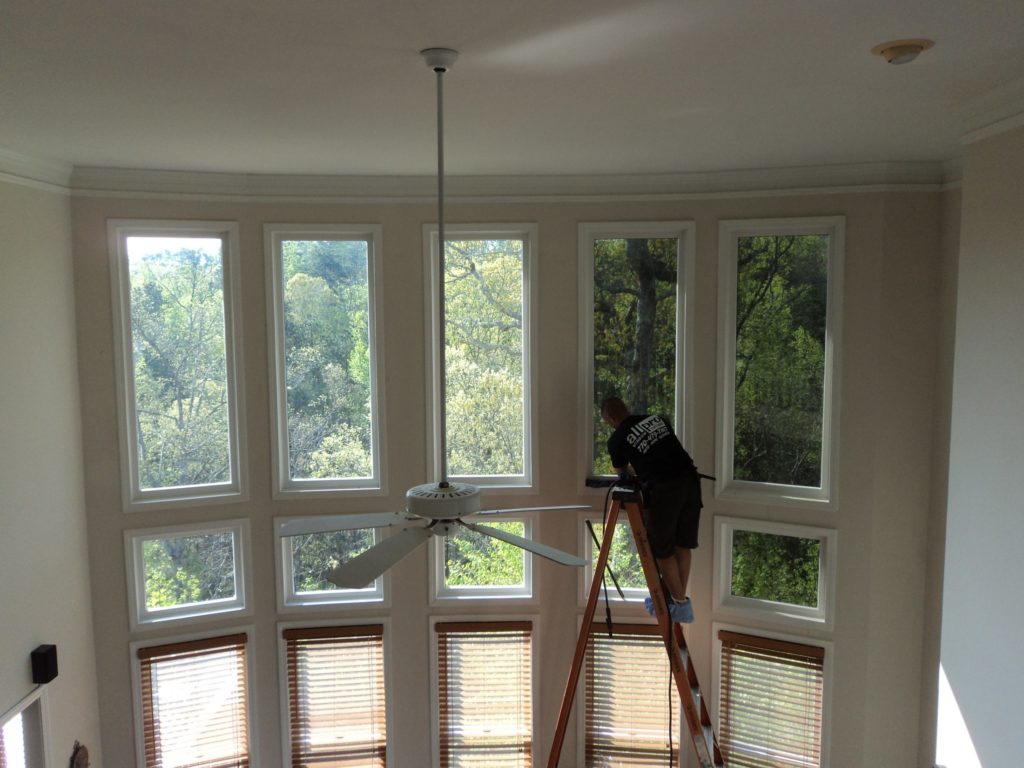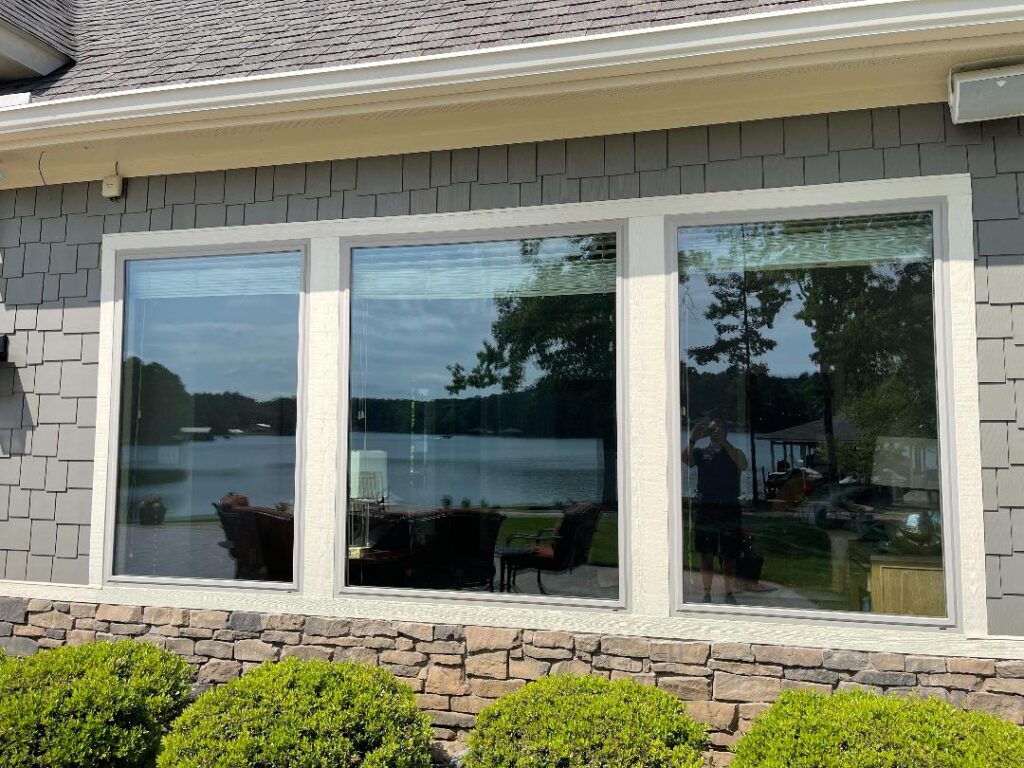Update Your Home with Professional Residential Window Tint Solutions
Update Your Home with Professional Residential Window Tint Solutions
Blog Article
Exactly How Residential Home Window Tinting Boosts Your Home's Power Performance
Residential home window tinting offers an engaging solution for house owners looking for to improve power efficiency within their home. By applying specialized movies to home windows, it properly lowers warmth transfer, consequently maintaining interior temperatures and decreasing the demand for excessive heating or air conditioning. This not only stops energy intake yet additionally gives an extra comfortable atmosphere by minimizing glow. However, comprehending the subtleties of exactly how tinting works and selecting the ideal kind for your home can be crucial. Strangely enough, what factors should one consider prior to making this investment?
Understanding Home Window Tinting
Comprehending window tinting is vital for house owners seeking to boost both comfort and energy effectiveness in their home. Residential Window Tint. Home window tinting includes the application of a thin film to the interior or outside surface of glass windows. This film can significantly modulate the amount of sunshine and warmth that gets in a home, therefore influencing indoor environment problems
There are various kinds of window tinting movies available, each with distinct properties. As an example, colored films absorb solar power, while reflective films disperse it away from the glass surface. Ceramic films offer a balance of visibility and warmth being rejected, making them a popular selection amongst house owners. The performance of window tinting is commonly gauged by its Visible Light Transmission (VLT) percentage, which indicates just how much light can pass with the film.
Advantages of Power Efficiency
Window tinting not just improves aesthetics however likewise plays a substantial duty in improving energy performance within property rooms. By decreasing warmth transfer through windows, colored movies develop a much more secure indoor climate, which can bring about substantial decreases in energy consumption for heating and air conditioning. This energy effectiveness equates into reduced energy bills, giving house owners with substantial long-term savings.

In addition, window tinting boosts the comfort of living spaces. By decreasing glare and blocking dangerous UV rays, tinted windows create a more pleasurable environment, which can result in enhanced wellness for occupants. The security against UV rays also helps preserve furnishings and flooring from fading, adding to the longevity of family things.
Exactly How Tinting Works
Tinting movies run with a mix of advanced materials and modern technologies created to regulate the quantity of solar power getting in a home. Mostly made up of polyester, these films typically incorporate metallic or ceramic bits that take in and show heat. This double ability permits them to substantially reduce the infiltration of ultraviolet (UV) rays and infrared radiation while allowing noticeable light to go through.
The effectiveness of window tinting is gauged by its solar warmth gain coefficient (SHGC), which shows exactly how much solar power is sent via the home window. Reduced SHGC values are more effective as they represent better warmth rejection. In addition, home window colors can feature a variety of tones, allowing property owners to personalize their aesthetic preferences while improving energy effectiveness.
Furthermore, these movies act as a barrier, protecting against warmth loss throughout chillier months by showing interior warmth back into the space. This thermal insulation effect matches the cooling advantages obtained during warmer months, contributing to a balanced interior climate year-round. By handling solar energy successfully, property home window tinting not just enhances convenience but likewise plays a vital role in decreasing energy intake and reducing energy bills.
Picking the Right Color

There are different types of home window movies available, consisting of colored, metalized, and ceramic. Ceramic films provide outstanding warmth control without compromising presence and are very sturdy, making them a preferred choice.
Noticeable light transmission (VLT) is one more important factor, as it indicates the quantity of natural light that can travel through the tinted glass. Property owners ought to select a tint with a VLT that enhances their lights preferences while still offering ample glare reduction.
Additionally, examining the solar warmth gain coefficient (SHGC) can aid establish just how well a tint can obstruct warm from sunlight. published here A reduced SHGC indicates much better warmth control, inevitably enhancing energy effectiveness.
Setup and Maintenance Tips
Correct setup and maintenance are essential elements in maximizing the benefits of property window tinting. Professionals likewise make use of specialized techniques and tools, which can boost the durability and effectiveness of the color.
Following installation, maintenance is vital to lengthen the life of the window film. It is advised to wait at least 30 days prior to cleaning up the colored windows to permit the sticky to cure totally.
Additionally, regular inspections are beneficial. Look for any type of peeling or bubbling, which can show inappropriate installment or wear with time - Residential Window Tint. Resolving these problems immediately can protect against additional damage and maintain energy effectiveness. By sticking to these installation and upkeep ideas, property owners can guarantee their home window sites tinting proceeds to provide considerable power financial savings and convenience for many years ahead.
Conclusion
In conclusion, residential home window tinting serves as an efficient option for boosting power efficiency within homes. By reducing warmth transfer and blocking unsafe UV rays, window films contribute to reduce power intake and boosted interior comfort.
Home window tinting entails the application of a slim movie to the interior or exterior surface area of glass windows. By lowering heat transfer with windows, tinted films create an extra steady indoor environment, which can lead to substantial reductions in energy intake for home heating and air conditioning.The performance of home window tinting is determined by its solar heat gain coefficient (SHGC), which indicates how much solar energy is transferred via the window. By taking care of solar power successfully, household window tinting not only enhances convenience yet also plays an essential role in reducing power usage and reducing utility expenses.
By decreasing warm transfer and blocking unsafe UV rays, home window films contribute to lower power intake and enhanced indoor comfort.
Report this page